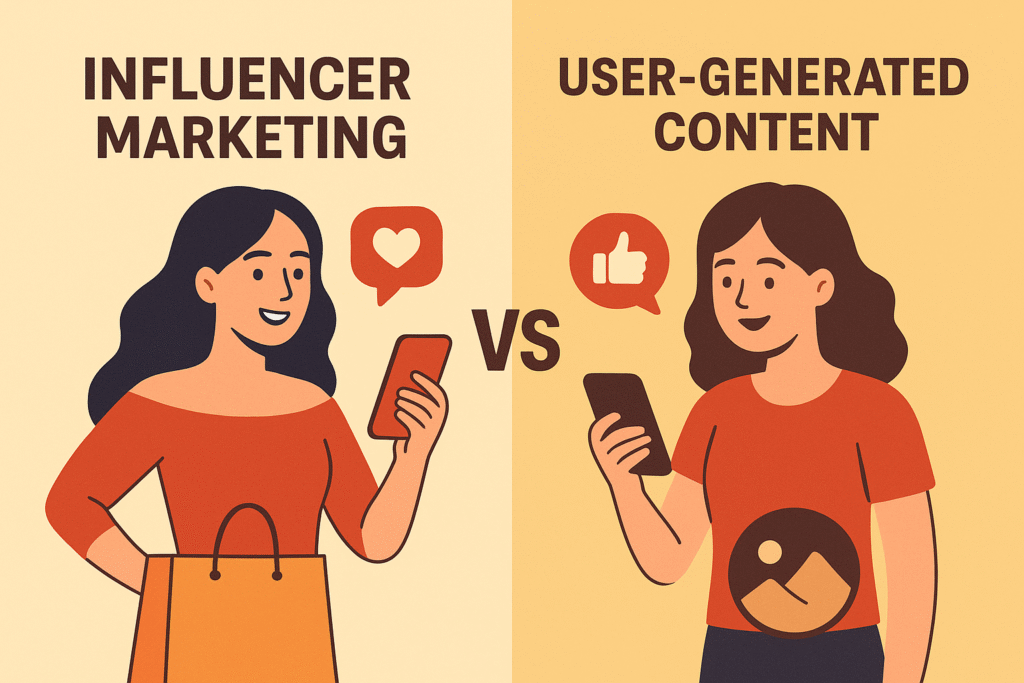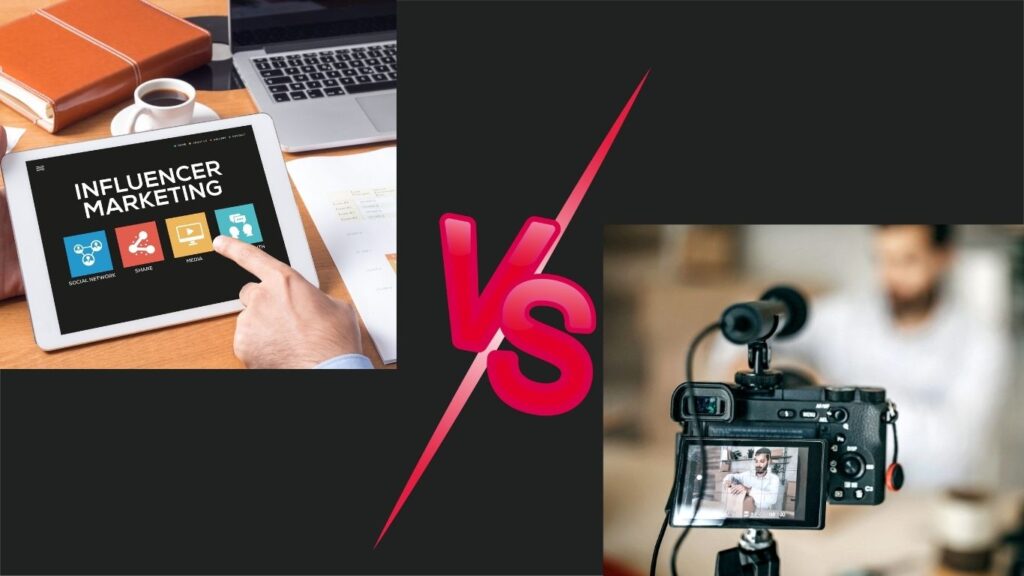UGC vs Influencer Marketing-discover which strategy delivers more trust, engagement, and ROI. Trends, examples, and actionable tips for India & beyond.

digital marketing evolves rapidly—but two strategies remain powerful: Influencer Marketing and User-Generated Content (UGC). Each has its own strengths, use cases, and ROI potential. But what’s the right choice in 2025?
This blog answers:
- What each strategy is and why they’re valuable
- How UGC continues to grow in trust and scalability
- When influencer collaborations outperform
- Real trends and statistics from India and globally
- Practical tips to apply both effectively
Whether you’re a startup, small brand, or creator, this guide will help you decide which strategy fits your goals for growth, trust, and engagement.
2. What Is Influencer Marketing?
Influencer marketing involves partnering with creators, celebrities, or niche content producers to promote your brand. You might pay them, gift products, or collaborate on sponsored content.
Types of Influencers:
- Mega‑influencers (1M+ followers)
- Macro‑influencers (100K–1M)
- Micro‑influencers (10K-100K)
- Nano‑influencers (1K -10K)
These creators offer access to segmented, loyal audiences and can amplify awareness fast.
3. What Is User‑Generated Content (UGC)?
UGC refers to any content created by your actual users or customers—testimonials, unboxings, reviews, photos, videos, or social mentions. Brands repurpose or curate it for marketing or social proof.
It’s free, authentic, and highly trusted—because it comes from real people, not staged campaigns.
4. Why Both Matter
Influencer Marketing Still Holds Value:
- Access niche communities
- Drive fast awareness or launch campaigns
- Good for aspirational or lifestyle brands
UGC Grows Stronger:
- Builds long-term social proof
- Costs less, scales more easily
- Feels real and honest to savvy consumers
Consumers in 2025 are harder to fool—brilliant content comes from peers, not only branded campaigns.
5. Influencer Marketing vs UGC: Key Differences
|
Metric |
Influencer Marketing |
UGC (User‑Generated Content) |
|
Source |
Paid or gifted creators |
Unpaid, organic content by real users |
|
Credibility |
Trust depends on influencer reputation |
Higher trust as content is organic |
|
Cost |
Variable (fees or product cost) |
Minimal — incentive-driven (e.g. recognition) |
|
Control |
High control over content and messaging |
Lower control; content varies naturally |
|
Scalability |
Limited by influencer budget |
Scalable across communities and users |
|
Engagement Potential |
High initial boost |
Consistent real engagement over time |
|
Best For |
Quick launches, niche campaigns |
Long-term social proof, trust building |
6. Statistics & Trends You Should Know
Global Insights:
- 78% of consumers trust UGC more than branded media.
- Micro-influencers typically deliver 60% higher engagement compared to macro-influencers.
India-Specific Trends:
- Indian brands report 3× higher ROI from micro-influencer and UGC campaigns versus traditional influencer partnerships.
- Regional/local UGC drives stronger trust and conversions in tier-2/3 cities.
- TikTok-style short-form videos by users get 40% more shares than paid influencer reels.
2025 Trends:
- UGC-based ads see 2× lower cost-per-conversion.
- Influencer collaborations are becoming costlier and more regulated—driving demand for micro-creators and UGC strategies.
7. When to Choose Influencers vs UGC
Choose Influencer Marketing When:
- You need rapid reach or brand association
- Launching a new product or entering new market segments
- Leveraging influencer credibility to attract aspirational leads
Choose UGC When:
- Trust, social proof, and authenticity are priorities
- Budget is limited or you need scalable content
- You serve niche audiences where peer voices matter more
8. Case Studies & Examples
Indian Case Study – D2C Brand Using UGC
A skincare startup asked customers to share photos using their product with #GlowWithUs. This generated thousands of UGC posts within weeks—top images became hero ads for future campaigns. Conversion rate rose by 25%.
Global Example – Influencer Campaign
A tech accessory brand launched with macro-influencers posting unboxing content. The campaign reached 250K users in one week and led to 10K direct conversions. However, ROI fell when influencer costs rose again next quarter.
Hybrid Example – Netflix & User Clips
Netflix India re-shared fan-made reaction reels of popular series. Combined with influencer tweets, the campaign delivered high engagement and low ad-spend.
9. How to Leverage Both for Max Impact
Hybrid Strategy:
Seed Launch via Micro-Influencers
Partner with niche creators to announce a launch, while equally highlighting authentic user reactions
Encourage UGC Early
Incentivize early users to share product usage (e.g., first-week challenge, hashtag campaign).
Curate UGC into Ads
Turn user clips into short-form ads with subtle branding. Use with retargeting campaigns for social.
Feature Influencers & UGC Together
Influencer reviews + user testimonials in the same message format to layer credibility.



Great information!